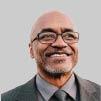System Change Playbook
A Playbook For shifting Systems
transformative change
Ashoka Fellows have in common a commitment to systemic-level change — to addressing the underlying causes that maintain the status quo. This is in fact a central criterion for awarding fellowships.
But no Fellow would presume to achieve systems change alone. Permanent shifts in our education system, in healthcare, in our economy, in immigration, in criminal justice and beyond often take clusters of Fellows working in complementary ways.
What does that look like?
A quick case study of Ashoka Fellows working to transform our criminal justice system reveals the way different solutions reinforce one another with the aim of ending mass incarceration. And yet it also highlights how social entrepreneurs rely on a common playbook along their journeys to impact.
THE SYSTEM: Criminal Justice
With 2.3 million Americans behind bars, the United States imprisons more people per capita than any other country in the world by far. Mass incarceration has destroyed lives, ripped apart families and communities, and depleted needed public resources. Layer this on top of the racial disparities of who is sent to prison and it’s no surprise that many consider defeating mass incarceration as the civil rights mandate of our time.
THE SYSTEM: Changers

Diagnosing the problem in new ways


Building alternatives that work better


Shifting culture and mindsets


shifting power and creating new leaders


embedding policies to create lasting change

System Change Playbook
Systems-changing innovators often rely on a common set of strategies in their work, beginning with how they approach a social problem in the first place. Below are a set of moves we frequently see within the fellowship that distinguish systems changers in particular, together with examples of criminal justice Fellows who exemplify these approaches particularly well.
DESIGN TO SPREAD WITH SPEED
Rather than protecting their intellectual property like most businesses would, systems changers are more likely to give it away and support the independent spread of their solution. In this way, they care more about growing ideas than organizations — in seeding a whole new approach rather than maintaining strict control.
At Ashoka we often refer to this as the difference between being the king of the hill and being the hill itself. Rather than capturing the market, Fellows are interested in growing or shifting the market in part because they recognize that is the only realistic way for a new solution to become mainstream and benefit all. In fact, 90% of Ashoka Fellows see their ideas independently replicated by others.
Of course, this approach comes with its own set of challenges: How do you give away what you’re doing while ensuring the integrity of what makes your approach work in the first place? Or how do you measure impact when it extends well beyond the walls of your own organization, your team, your budget?
– Raj Jayadev
WHAT DO SYSTEM CHANGERS NEED?
If there was ever a moment for systemic-level change in America and around the world, this is it — a global pandemic revealing in stark relief the inequities designed and maintained by the current world order, overlapping with a racial justice movement 400 years in the making. What do systems changing innovators need to meet the moment?
Resources
Social entrepreneurs remain chronically underfunded, each leveraging limited financial resources for outsize social impact. Christina Fialho, for instance, launched an idea with just $122,000, and 8 years later, her organization not only protects 50,000 immigrants every day she co-authored the 2019 California Bill banning private, for-profit detention facilities and prisons. In the last 10 years, $1 invested in Ashoka Fellows has unlocked $140 in additional investment, accelerating their impact. The type of funding matters. Funding relationships built on trust and sharing a common purpose means donors can grant multi-year, unrestricted funds that enable innovators like Christina to impact systems. Funders and systems changers have identified strategies that work in this report.
A network of peers
Upon election, Ashoka Fellows join the largest network of social entrepreneurs in the world — for life. Changing systems is a lonely journey, and the Fellowship curated by Ashoka, built on rigor and trust, connects peers that see the world differently. It creates deep connections that nurture not just the systems changing, but also the social entrepreneurs’ well-being, with depression and burnout on the rise. Moreover, there is increasing evidence that effective change can only be achieved if the wellbeing of the change-maker is secure.
Visibility
They need support in amplifying the powerful innovations so they are widely known and adopted. Amplifying their systems changing solutions enables them to gain the visibility & traction needed. It also accelerates the ability of systems changer to explore new opportunities for collective impact at a global scale.
A Fellowship Lifts All Boats
Each Ashoka Fellow joins a global network of 4,000 peers — a lifelong learning and impact community like no other.

“Ashoka has been a bullhorn for our call to action — spreading our idea across the planet“.
“Ashoka is a homecoming for social entrepreneurs who have been homeless. There is no better community that understands the loneliness of leadership.“
86%
“ of Fellows credit Ashoka with refining and deepening their impact “.
“Ashoka is a network of individuals who don’t understand limits or boundaries – people who don’t care for the convention of the day“.
“I literally would not have been able to continue building this solution if I hadn’t received the stipend from Ashoka in the development years“

“ Fellows report they collaborate with 4 other fellows on average after being elected “.









